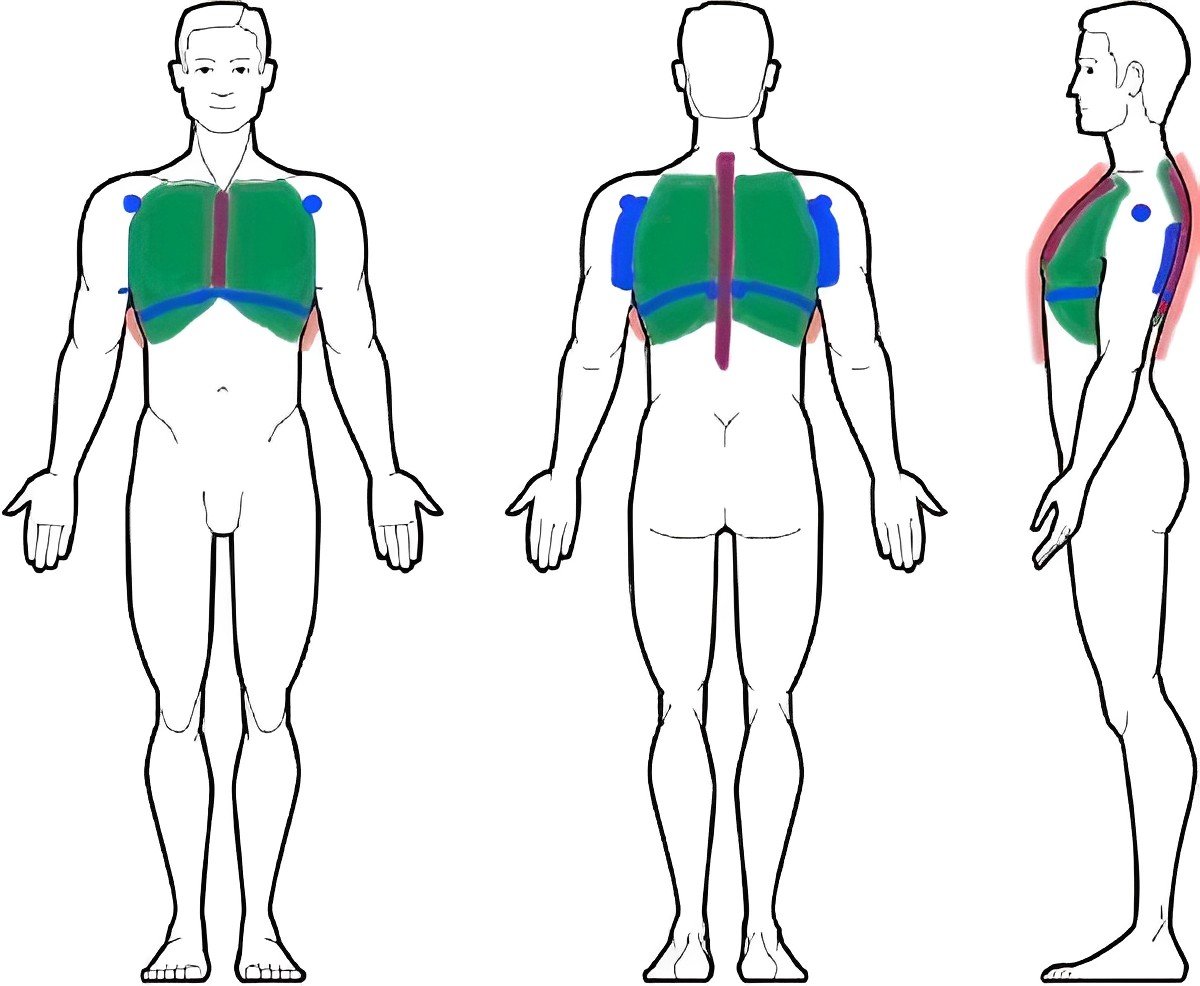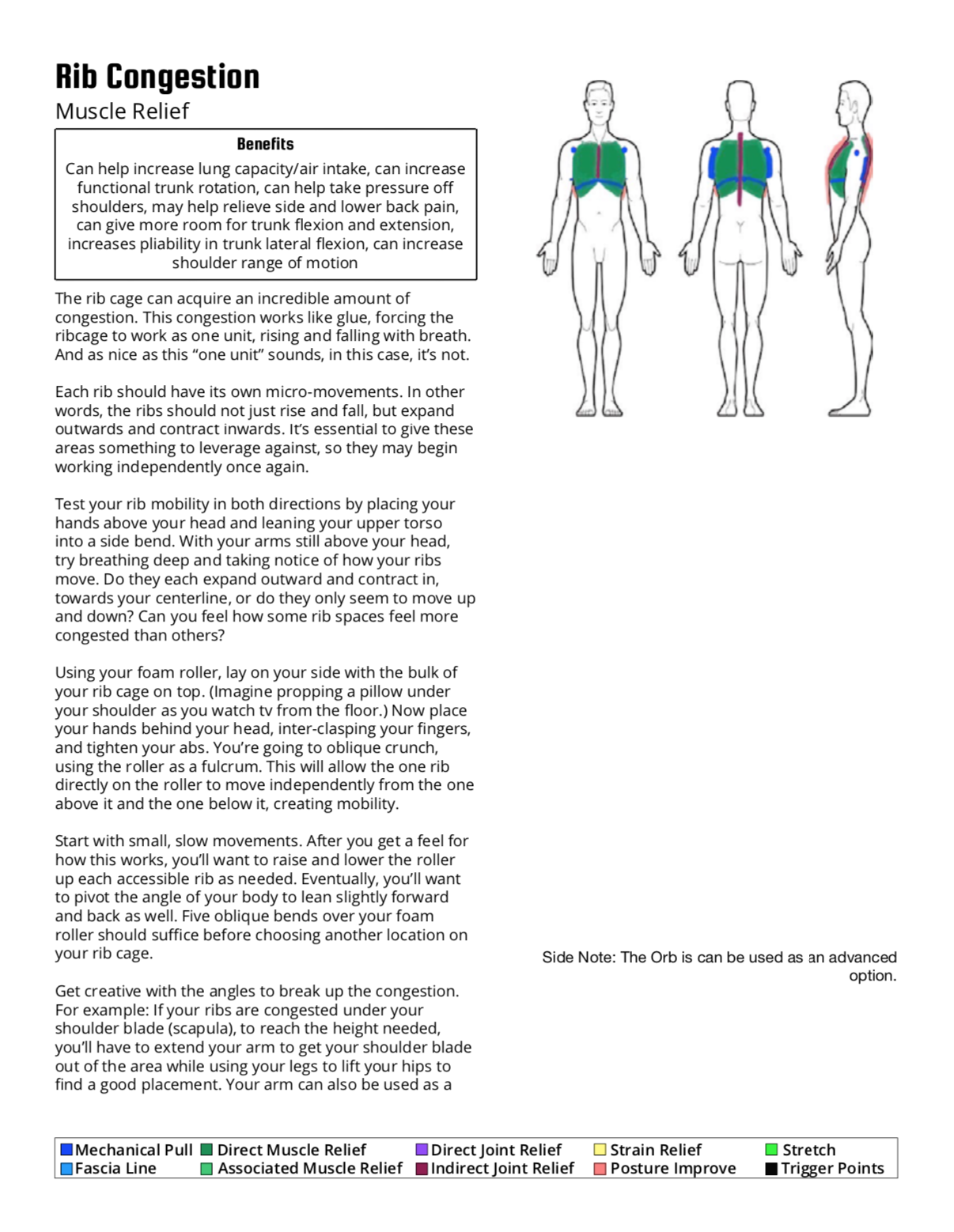Rib Congestion
Muscle Relief
Benefits
Can help increase lung capacity/air intake, can increase functional trunk rotation, can help take pressure off shoulders, may help relieve side and lower back pain, can give more room for trunk flexion and extension, increases pliability in trunk lateral flexion, can increase shoulder range of motion
The rib cage can acquire an incredible amount of congestion. This congestion works like glue, forcing the ribcage to work as one unit, rising and falling with breath. And as nice as this “one unit” sounds, in this case, it’s not.
Each rib should have its own micro-movements. In other words, the ribs should not just rise and fall, but expand outwards and contract inwards. It’s essential to give these areas something to leverage against, so they may begin working independently once again.
Test your rib mobility in both directions by placing your hands above your head and leaning your upper torso into a side bend. With your arms still above your head, try breathing deep and taking notice of how your ribs move. Do they each expand outward and contract in, towards your centerline, or do they only seem to move up and down? Can you feel how some rib spaces feel more congested than others?
Using your foam roller, lay on your side with the bulk of your rib cage on top. (Imagine propping a pillow under your shoulder as you watch tv from the floor.) Now place your hands behind your head, inter-clasping your fingers, and tighten your abs. You’re going to oblique crunch, using the roller as a fulcrum. This will allow the one rib directly on the roller to move independently from the one above it and the one below it, creating mobility
Start with small, slow movements. After you get a feel for how this works, you’ll want to raise and lower the roller up each accessible rib as needed. Eventually, you’ll want to pivot the angle of your body to lean slightly forward and back as well. Five oblique bends over your foam roller should suffice before choosing another location on your rib cage.
Get creative with the angles to break up the congestion. For example: If your ribs are congested under your shoulder blade (scapula), to reach the height needed, you’ll have to extend your arm to get your shoulder blade out of the area while using your legs to lift your hips to find a good placement. Your arm can also be used as a lever or “pump” to break up these small, tight areas as well.
You’re aiming for a feel, so don’t sweat it! Enjoy the creativity and the personal development of your body awareness. Start with only a few areas at first, and after a few weeks, you should know what is tight, what is not, and how to angle your roller for access to it. You’ll be a pro in no time.
After, retest your breathing and side bend. If for whatever reason, some areas still feel stuck, then you can choose to work on them now or come back to them later. Most rib movement, once unstuck, will not revert to a stagnate state overnight. This mobility will last you for some time!
Side Note: The Orb is can be used as an advanced option.
Quick Reference:
1. Using your foam roller, lay on your side with the bulk of your rib cage on top. Place your hands behind your head, inter-clasping your fingers. Tighten your abs and perform oblique crunches, using the roller as a fulcrum. This will allow the rib on top of the roller to move independently from the one above it and the one below it.
2. A second, more advanced option as a fulcrum, is your Orb.






